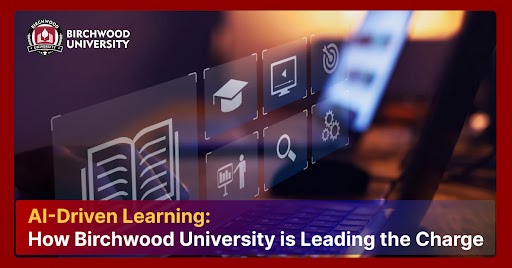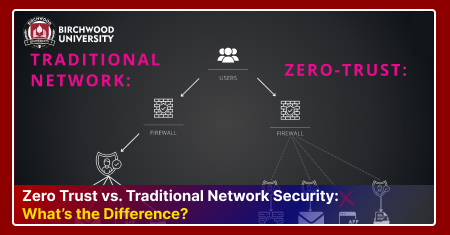Reasons why Distance Education is the Future
Jan 9, 2024Distance education is becoming increasingly popular in today's digital age, and there are several reasons why it is considered the future of education. Distance learning and eLearning are two ways that education is keeping up with the digital revolution. Many people are now interested in distance learning as a result of the recent epidemic, which abruptly pulled billions of pupils out of the classroom. To stay current with the trends, even schools are adopting online teaching methods.
Using cutting-edge technology like gamification and Augmented Reality (AR)/Virtual Reality (VR) to keep learners interested, distance or online learning engages students and evolves toward more engaging formats. Some surprising trends in the eLearning industry will be discussed in this essay.
What is eLearning?
A straightforward educational method called eLearning enables students to study anywhere. With the aid of cutting-edge technologies, complete information can be attained. Another way to think about it is as universally accessible online, remote, or internet learning. Students and professionals who wish to acquire a variety of skills through personalized learning might benefit from online learning.
eLearning, which just needs a computer or mobile device with an internet connection, has several benefits for both educators and students. Anybody can purchase an interesting course and take it from home or another remote place. People may now efficiently seek, receive, and share knowledge at a low cost thanks to this as well.
Benefits of Distance Learning:
All of the benefits of distance learning, a relatively new educational model, are included in eLearning. Being able to learn from any location offers students several benefits, including:
- Accessibility:
Being accessible is one of the key benefits of distance learning. Students can access instructional materials and take part in classes from anywhere in the globe with the help of online platforms and virtual classrooms. This removes the geographical obstacles that traditional schooling frequently poses.
- Flexibility:
When it comes to scheduling, distance education is flexible. Learners are free to set their study schedules and speed of learning. Those who wish to pursue further education but are working professionals or have other responsibilities will find this especially helpful.
- Cost-effective:
Distance education can be more cost-effective compared to traditional education. There are no commuting expenses or the need to relocate to attend a specific institution. Additionally, online courses often have lower tuition fees, making education more affordable for a wider range of students.
- Multiple learning options:
Students can take advantage of a variety of learning opportunities through distance education. Regardless of where they are physically located, they have access to a wide range of programs and courses given by various schools. Students now have more opportunities to learn new things and broaden their horizons.
- Technological developments:
The expansion of remote learning has been significantly aided by technological developments. Students' learning is improved via multimedia resources, interactive learning materials, and virtual classrooms. Technology will continue to advance, allowing remote learning to develop and offer ever-better learning options.
Reasons E-learning is The Education of The Future
- Adaptive Education:
With adaptive education, all tasks and resources are tailored to the individual needs of the learner. The performance of adaptive learning with eLearning software is mostly achieved by carefully chosen algorithms and reviews. This innovative idea will support students' learning by enabling them to customize their courses to their preferences while also helping eLearning to expand and maintain learners' interest.
- Social Learning:
Social learning uses contemporary technologies and the fundamentals of human interaction—such as group dynamics and social media—to simplify instruction and maintain student engagement. In contrast to traditional classroom instruction, social learning emphasizes technology, watching films, and reading books. It is easier to understand, more productive, and more efficient.
Users enjoy the social learning apps that have been developed. A company that develops eLearning apps will comprehend your needs and provide high-quality, thoughtfully built online learning solutions. Renowned online education software development firms are creating software that meets the demands of the business while also understanding the needs of the students.
- Visual Education:
It is said that the three sorts of learners who do best in school are kinesthetic, auditory, and visual. Videos and voice overs provide an effective learning experience since they practically demonstrate the subject, as we have all experienced. One of the best justifications for students to learn online was this.
The only group that the conventional approach of course delivery properly served were auditory learners who enjoyed hearing the material while studying. One can observe the practical impact and outcomes in the form of instructional movies from lectures that are video-based.
- Artificial intelligence:
Forecasts made even before the coronavirus epidemic indicated that the global eLearning industry will reach $325 billion by 2025. According to industry experts, an AI-based eLearning platform is a technology that retains the ability to carry out various jobs requiring human intellect.
AI is capable of offering answers for a variety of human-related problems, including speech recognition, translation, decision-making, and more. The ability of artificial intelligence (AI) to compile and evaluate user data at each interaction point is one of its key characteristics. Online courses can be more effective for this reason.
- Micro-learning:
Big, multi-phase projects never get us enthusiastic, no matter how old we are. In a similar vein, breaking up the learning materials into smaller, more manageable chunks has greatly increased the achievement of students in collaborative classrooms.
Scholars have discovered that segmenting study content into manageable chunks leads to more intelligent and efficient retention—a process known as microlearning. For example, you could divide a two-hour class into four 30-minute sessions. Microlearning exemplifies a shift that extends beyond eLearning into the realm of conventional classroom settings.
- Education And Progress:
eLearning makes use of technology to enable distance learning. It is believed that anyone can study online by their learning styles and the principles of instructional design. Students of all ages can learn and grow thanks to the Learning and Development (L&D) function, which also aids in the evaluation of the course's resources and general design.
It also helps teachers put together analytical and actionable data. L&D is a tactic that links academic achievement to overarching organizational objectives. These days, it is used in the development of eLearning software across numerous businesses where education is given top emphasis.
- Learning Management Systems:
In many organizations and educational institutions, managers create and store digital information using what is referred to as a content management system (CMS). Recently, the idea of a learning management system (LMS) for study materials has spread throughout the world to eLearning platforms.
Professors and other eLearning faculty can now design, document, and register courses and study materials on an LMS, which is useful to them. eLearning is important in today's digitally connected and technology-driven environment. Users can take required courses online by going digital. By utilizing an LMS's capabilities, organizations may effortlessly manage their courses and create lesson plans, doing away with outdated analog methods.
- Personalized Educational Process:
Users of eLearning have total flexibility and can study at their speed. This makes it easier for the students to schedule their study time for as long as they can focus. Online learning is flexible, but it may also be tailored to each student's needs and proficiency level. The ability to record and preserve sessions for later viewing is a feature of online learning systems that assist students in reviewing material as needed.
Another advantage is increased interaction with the professors, which clears up questions and offers additional input. Personalized course and lecture recording capabilities as well as online storage for study resources like eBooks, videos, and images are just two of the many services that eLearning app development businesses provide. This additional material is accessible from anywhere at any time, providing a more dynamic and personalized education.
Conclusion:
In conclusion, distance education is the future of education due to its accessibility, flexibility, cost-effectiveness, diverse learning opportunities, and technological advancements. As technology continues to advance, distance education will only become more prevalent and accessible to learners worldwide.






